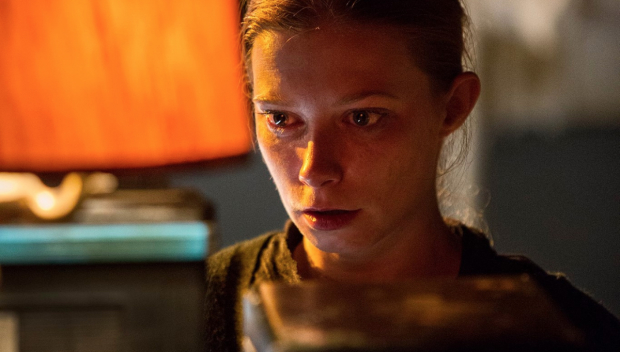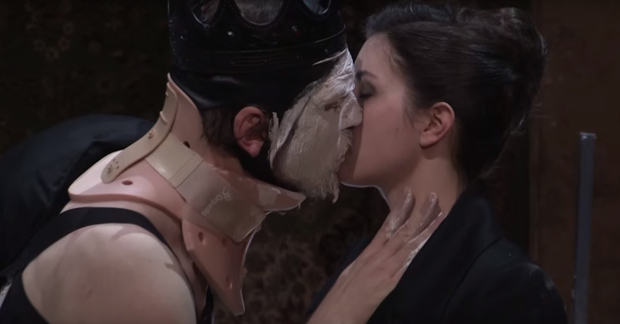Ophelias Zimmer (Royal Court)

© Gianmarco Bresadola
Director Katie Mitchell has a problem with Hamlet. "I find it offensive from a gender point of view," she told me earlier this year. "There is something about the celebration of a depressed, violent man which I am a bit weary of."
Out of that difficulty comes one of the most astonishing, gripping and uncompromising pieces of theatre you’re likely to see this year. With writer Alice Birch and designer Chloe Lamford, Mitchell has created Ophelia’s world, a claustrophobic room, where she sews and reads, and passes the hours away.
The structure is strong as a trap. Ophelia appears in five scenes in Hamlet; these are mirrored here by the Five Stages of Drowning, spelt out on a screen at the front of a steel-framed cube which descends to divide each section of action. They move from Surprise to Clinical Death as Ophelia herself travels from an existence where she is – to quote another Shakespearean tragedy – "cabined, cribbed, confined", at the beck and call of her father, to one where state sanctioned cruelty has destroyed all compassion in an attempt to protect Hamlet’s reputation.
The stroke of genius – told in German with English surtitles – is that Ophelia remains almost as silent as she is in the play. Her story is not told as much as embodied. We see her – in Jenny König‘s subtle and compelling performance – silently going through the ritual of her day, accompanied by the words of what we must presume is the advice of her dead mother to make herself small, to vanish from sight.
At the back of the stage, in a glass box, the other actors make the sound effects that accompany her like noises off – the footsteps on the stairs, the muffled calls of her name, demanding obedience. An owl hoots as she sleeps; she wakes suffocated by nightmares; in the morning she listens to the bird song – and throws away the flowers that are delivered by a kindly but terrified maid, but which are "only for the dead."
Hamlet’s letters take the form of cassette recordings, initially tender and dreaming of a new life, but descending into graphic sexual abuse and threat. As the action follows the shape of Shakespeare, he suddenly bursts in, violently facing Ophelia down, dancing like a maniac as she sobs in a chair. His selfish violence and a troubling (unseen) encounter pushes her towards the edge; she takes to sleeping under the bed.
It is the death of her father – the body dragged into the room in front of her– that tips her over the edge. After that, she is powerless to resist the sinister forces that drug and demean her, until brutal death in a watery grave feels like her only means of escape.
The imaginative leaps that Birch and Mitchell make are entirely consistent with everything we know from Hamlet. But they are buttressed by unforgettable metaphors: the water that seeps from the floor; the flowers; the layers of clothes worn as protection, as comfort and ultimately as constriction.
In its fully-realised oppressive power Ophelias Zimmer has a calm ferocity that holds you in its grip from troubling beginning to tragic end. You will never be able to watch Hamlet in the same way again.
Ophelias Zimmer runs at the Royal Court until 21 May 2016.











